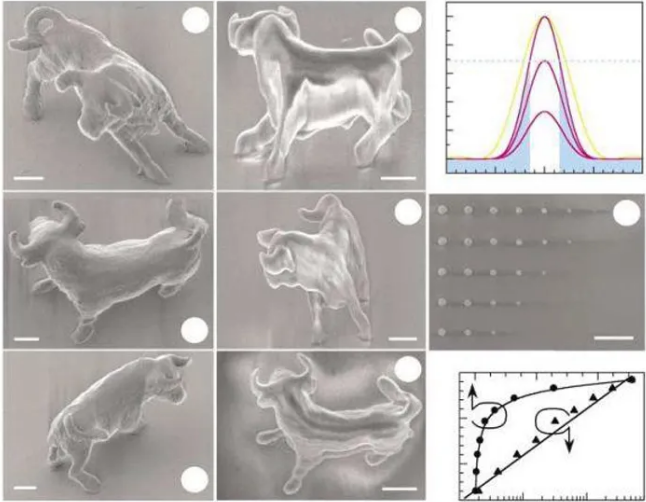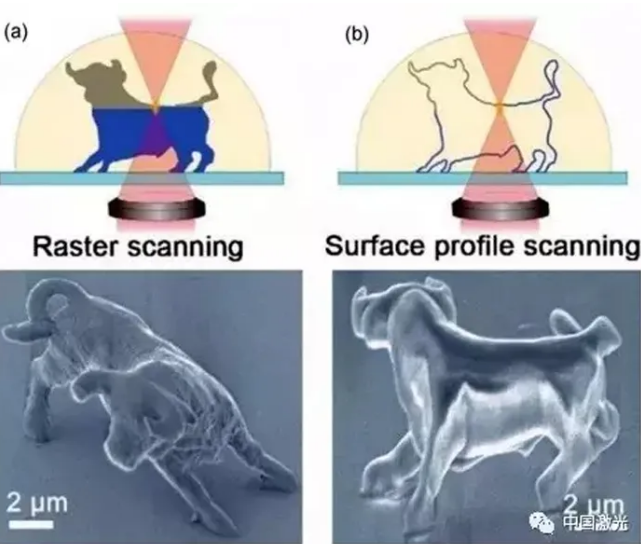
hotline:
17715390137
Tel/Wechat:
18101240246 (Technology)
0512-68565571
Email:mxenes@163.com (Sales Engineer)bkxc.bonnie@gmail.com
Scan the code to follow or search the official account on WeChat:
2D Materials Fronrier After paying attention,
click on the lower right corner to contact us,
Enter enterprise WeChat.
Professional Services Online

 The "Nano Cow" incident 19 years ago was like a button, which started the rapid development of laser micro-nano processing as soon as it was pressed.
The "Nano Cow" incident 19 years ago was like a button, which started the rapid development of laser micro-nano processing as soon as it was pressed.
Since then, the development of ultrafast laser and micro-nano processing technology has gradually become a popular direction for laser processing. Ultrafast lasers can achieve unprecedented extreme and precision manufacturing effects, greatly expanding the potential and application range of laser processing, especially in recent years with high repetition rates of hundreds of femtoseconds to subpicosecond pulse widths and hundreds of kilohertz to megahertz. And the new generation of ultra-fast lasers with high average power of tens of watts or even hundreds of watts is developing rapidly, which is expected to solve the inherent contradiction between processing quality, processing accuracy and processing efficiency, and usher in new academic research and development opportunities.

The prototype of laser micro-nano processing technology
In 2001, a paper published in the journal Nature stated that Kawata of Osaka University in Japan, Chinese scientist Hongbo Sun and others used laser technology to make the worlds smallest cow with synthetic resin. The release of this research result caused a sensation in the scientific community.
A cow the size of a red blood cell was born in the hands of scientists. Its body length is only 10 microns and its height is 7 microns (1 micron equals one thousandth of a millimeter).
"Nano cattle" structure diagram
The research used femtosecond laser direct writing technology for the first time, successfully breaking through the limit of optical diffraction limit, using femtosecond laser with a wavelength of 780 nanometers to prepare a three-dimensional three-dimensional microstructure-"nano cow". The structure achieved a processing resolution of 120 nanometers.
Sun Hongbo, an internationally renowned scholar in the field of ultra-fine laser processing who led this research and now a professor of the Department of Precision Instruments at Tsinghua University, said poetically when introducing the media at the time, "We hope that this cow can be loaded with drugs. The car moves in the blood vessels."
So, why sculpt a cow? According to the researchers, this is because the cow has very sharp horns, and the whole body has both smooth parts and large curved parts. This poses a challenge to the production technology. It can perfectly create a "nano cow", and it can also be made. Various nanomachines.
At the same time, the research team has successfully fabricated the worlds smallest spring system, which enables femtosecond laser micro-nano processing technology to truly enter the field of nano-device preparation. The emergence of femtosecond laser micro-nano processing technology has made the preparation of complex micro-nano devices possible.
In this regard, Professor Chen Qidai of Jilin University once said in an interview with "Laser Manufacturers": Femtosecond laser micro-nano preparation technology first appeared in the mid-1990s, when only some simple dotting and scribing processes could be done. Its accuracy can only achieve a range of hundreds of nanometers. Later, the more critical event was that in 2001, Professor Hongbo Sun published the "Nano Cow" work, which involves femtosecond laser micro-nano processing, which uses femtosecond laser in polymer materials. maded. This research has greatly promoted the research process of ultrafast laser Wiener processing.
Professor Hongbo Suns work on “nano cattle” has attracted widespread attention at home and abroad. Since then, many researchers have done a lot of work in femtosecond laser two-photon polymerization, such as the use of femtosecond lasers to produce various 3D wafers, 3D modeling, nano-scale complex structures, including various bionic structures, biophotonics devices, microfluidic chips, three-dimensional metal parts, etc. made by various university research institutions.
According to the hydrophobic properties of lotus leaves, femtosecond laser can be used to prepare the surface of biomimetic hydrophobic materials, which is a hot research topic in recent years

Ultrafast laser micro-nano processing has become the "new favorite" of the times
Ultrafast laser micro-nano processing is an ultra-fine special manufacturing technology that can process special materials to achieve special structures and specific optical, electrical, and mechanical properties. Although this technology can no longer rely on materials to manufacture tools, it broadens the types of materials to be processed, and has the advantages of no wear and deformation. At the same time, there are also problems to be solved and improved in energy delivery and utilization efficiency, laser power and absorption wavelength selection, delivery space accuracy, tool shape, processing efficiency and precision.
In recent years, the development of ultrafast laser technology has been extremely rapid. With the breakthrough and commercialization of high-power picosecond, femtosecond laser and fiber ultrafast laser technology, ultrafast laser has moved from the laboratory to the actual industrial production application, becoming the academic community and Popular directions in the laser application industry. At the same time, it is also valued by all countries and has become the "new favorite" of the times.

Femtosecond laser direct writing technology makes micron-scale cattle

| Reminder: Beijing Beike New Material Technology Co., Ltd. supplies products only for scientific research, not for humans |
| All rights reserved © 2019 beijing beike new material Technology Co., Ltd 京ICP备16054715-2号 |